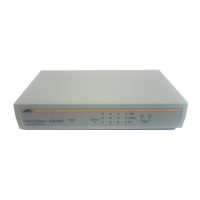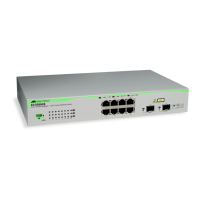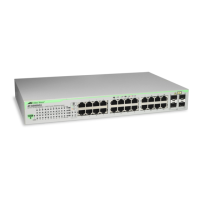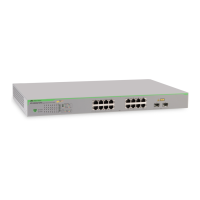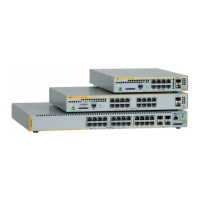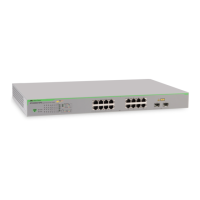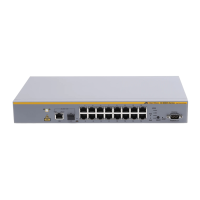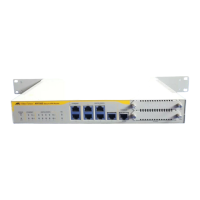Chapter 42 - Route Preference Commands
Route Preference is a way for routers to select the best path when there are two or more different routes to the same destination from two different routing
protocols.The majority of routing protocols are not compatible when used in conjunction with each other.This Switch supports and may be configured for many
routing protocols, as a stand alone switch or more importantly, in utilizing the stacking function and Single IP Management of the Switch.Therefore the ability to
exchange route information and select the best path is essential to optimal use of the Switch and its capabilities.
The first decision the Switch will make in selecting the best path is to consult the Route Preference Settings table of the Switch.This table can be viewed using
the show route preference command, and it holds the list of possible routing protocols currently implemented in the Switch, along with a reliability value
which determines which routing protocol will be the most dependable to route packets. Below is a list of the default route preferences set on the Switch.
Route Type Validity Range Default Value
Local 0 – Permanently set on the Switch and unconfigurable. 0
Static 1 – 999 60
OSPF Intra 1 – 999 80
OSPF Inter 1 – 999 90
RIP 1 – 999 100
OSPF ExtT1 1 – 999 110
OSPF ExtT2 1 – 999 115
As shown above,Local will always be the first choice for routing purposes and the next most reliable path is Static due to the fact that its has the next lowest
value.To set a higher reliability for a route, change its value to a number less than the value of a route preference that has a greater reliability value using the
config route preference command. For example, if the user wishes to make RIP the most reliable route, the user can change its value to one that is less than
the lowest value (Static – 60) or the user could change the other route values to more than 100.
The user should be aware of three points before configuring the route preference.
1. No two route preference values can be the same. Entering the same route preference may cause the Switch to crash due to indecision by the Switch.
2. If the user is not fully aware of all the features and functions of the routing protocols on the Switch, a change in the default route preference value
may cause routing loops or black holes.
3. After changing the route preference value for a specific routing protocol,that protocol needs to be restarted because the previously learned routes
have been dropped from the Switch.The switch must learn the routes again before the new settings can take effect.
The route preference commands in the Command Line Interface (CLI) are listed (along with the appropriate parameters) in the following table:
Command Parameters
config route preference [static | rip | ospfIntra | ospfInter | ospfExt1 | ospfExt2] <value 1-999>
show route preference {[local | static | rip | ospfIntra | ospfInter | ospfExt1 | ospfExt2]}
Each command is listed, in detail, in the following sections.
268
Allied Telesyn AT-9724TS High-Density Layer 3 Stackable Gigabit Ethernet Switch • Command Line Interface Reference Manual
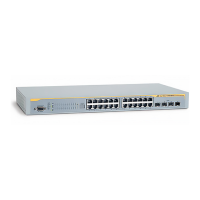
